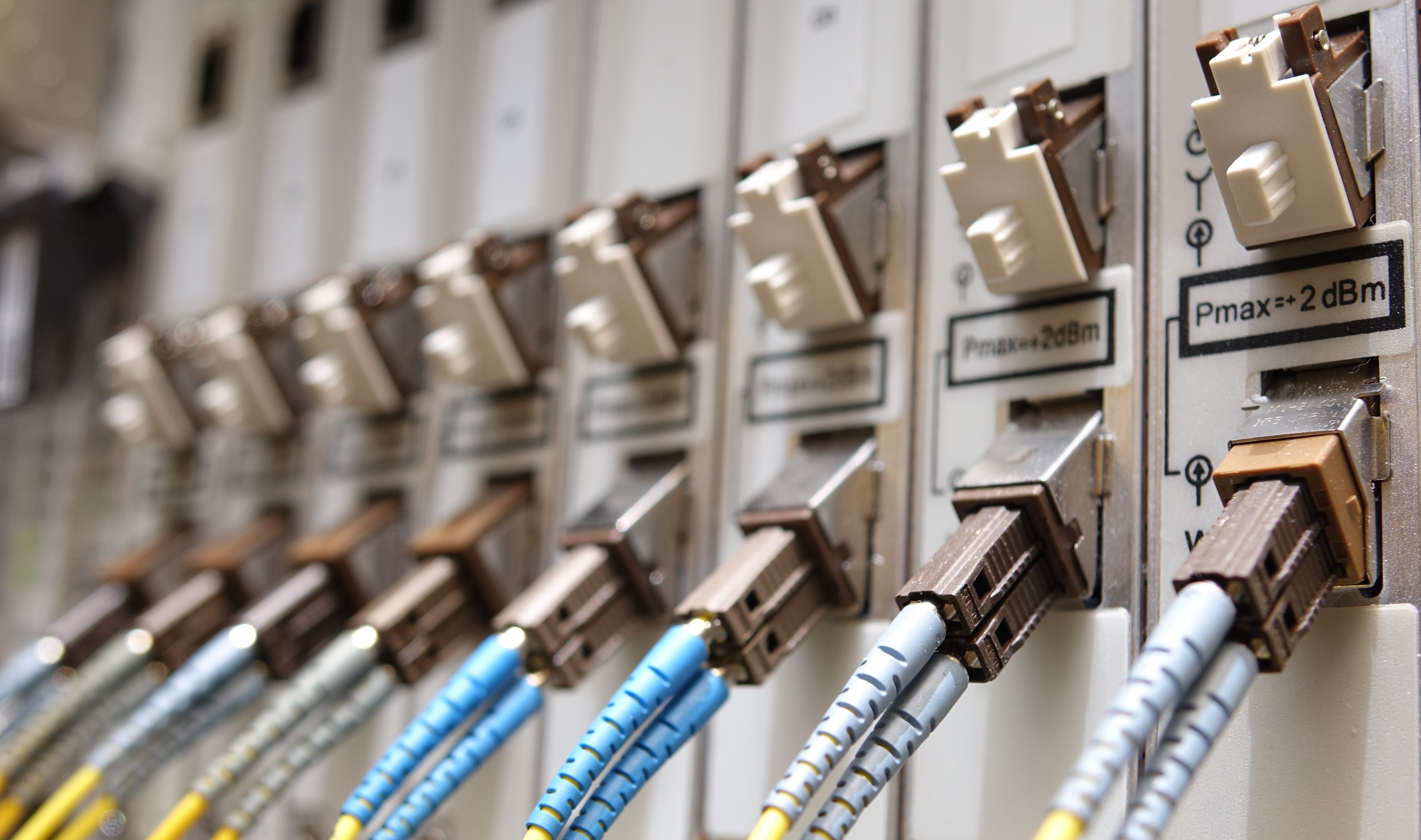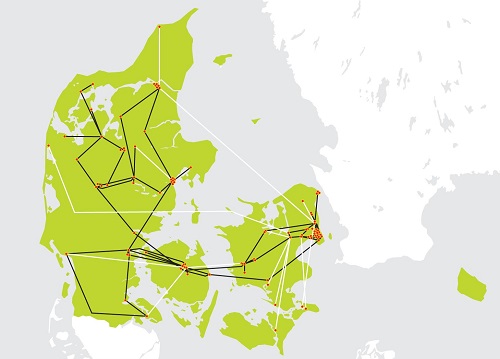
DeiC develops and operates the Research Network, which is a nationwide network infrastructure that connects universities and research institutions with high-speed network for the benefit of research and collaboration.
The Research Network also provides the connection to other national and international networks, and connecting the whole world with your desk or laboratory equipment.
You can use the Research Network both as an Internet provider and as a provider of closed connections.
Here you get the technical explanations as well as the possibilities with the different solution models.
Research Network as internet provider
The Research Network is the internet provider of the universities and research institutions. The network is based on two central routers located in Ørestaden and in Lyngby, and both of these routers are connected to similar routers from our network provider, NORDUnet.
NORDUnet handles the task of the Research Network's international traffic: to the other Research Networks (including GÉANT, Internet2, etc.) as well as international peering to the general Internet.
- Read more about foreign connections here
Each university has a connection to each of the two central routers. The connections are routed through the country to ensure the best possible redundancy.
At most universities, the Research Network has an additional one or two so-called small network routers, which are similarly redundantly connected to the central routers. From the small network routers, 'last mile' connections are then established to the institutions located in the immediate area, just as dormitories are typically connected to the small network routers. Last mile connections are typically not redundant.
The large institutions (especially the universities) handle how the traffic is distributed online, using the routing protocol BGP.
However, smaller institutions and especially dorms usually prefer the Research Network to act as their 'default gateway' - as the front door to the Internet. Another model may be that the Research Network communicates with a local router or firewall at the institution.
The Research Network is based on a fiber infrastructure that covers a large part of the country. To increase the utilization of these fibers, CWDM or DWDM is used, so that one fiber can transport up to 88 individual circuits.
Some of these are used for the Research Network's own internet supply, but the others are available to the affiliated institutions. This way of building networks ensures that the allocated capacity is always available and that the other quality parameters are close to ideal: Lowest possible delay, no packet loss, no jitter.
The research network as a provider of dedicated point-to-point connections

Many institutions have geographically distinct locations. To connect these, the Research Network offers dedicated point-to-point connections, which are typically of the highest achievable quality, at the optical level, so that the institution itself can have e.g. an MPLS structure on top of this.
The Research Network focuses on the lowest possible delay, the highest possible quality and practically unlimited bandwidth. This type of connection can be established with protection against crashes via redundancy at the request of the institution.
Connections of this kind are provided by the research network far more than the internet supply itself, which is typically only one or two connections to the entire institution.
These connections enable time-critical applications and consolidation of server infrastructure at fewer addresses, while they can also be used for replication between disk systems, CTS systems, alarm and much more. Currently, institutions can choose between connections at 1Gbps, 10Gbps and 100Gbps, just as connections can be encrypted at the hardware level. Other needs can probably also be met. Contact us about it.
- Read more about the closed point-to-point connections here
There are also a number of services and opportunities associated with the research network.
Network services
In addition to network connection, DeiC offers a number of network-related services that users can choose to use when they are connected to the research network, e.g. name service, time service, email, large file sharing, My research network, iperf, MultiCast and DNSSEC.
- Read more here
Be a part of the project
If you are a technician and work with network infrastructure, then the working group Net TekRef is an opportunity to become wiser, share experiences with others and have a direct influence on the research network. Through collaboration, we get better all the time.
- Read more here




